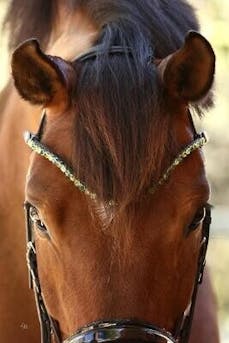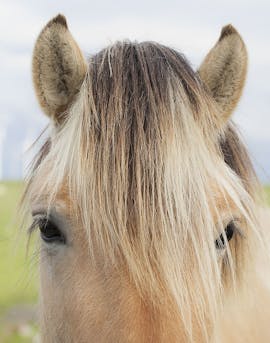A horse's forelock is a tuft of hair that grows between the horse's ears and falls onto its forehead. Here are some interesting facts about horse forelocks:
- The texture and thickness of a horse's forelock can vary depending on the breed and individual horse. Some horses have thin, wispy forelocks, while others have thick, full forelocks that cover their entire forehead.
- Like a horse's mane and tail, a horse's forelock can be groomed and styled in various ways, such as braiding or trimming. Some horse owners prefer to keep their horse's forelock long and flowing, while others may trim it shorter for a neater appearance. A horse's forelock can serve a practical purpose, helping to keep sweat and debris out of the horse's eyes during exercise or work. In some cases, a horse may develop a condition called "forelock rubbing," where it excessively rubs its forelock, possibly due to skin irritation or discomfort.
- In some equestrian disciplines, such as dressage and hunter/jumper, a neatly groomed and styled forelock is considered desirable and can be a factor in competition judging. in some cultures, a horse's forelock is considered a symbol of good luck. For example, in some Native American tribes, it is believed that braiding a horse's forelock can help protect the horse and rider from harm.
- A horse's forelock can also be used as a way to help manage the horse's behavior. For example, some horse trainers use pressure on the forelock to help calm and soothe nervous horses during training or grooming sessions. The color and pattern of a horse's forelock can also vary, depending on the horse's coat color and genetics. Some horses have forelocks that match the colour of their mane and tail, while others may have a different colour or even a unique pattern, such as a white or flaxen forelock on a dark-coloured horse.
horses Forelock Info...





